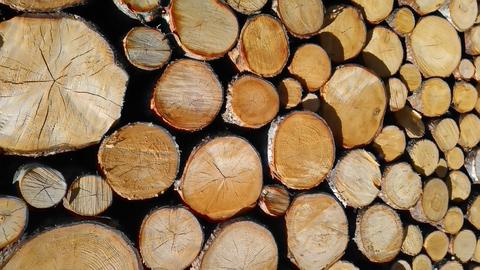What do you want to achieve?
Do you want to create an environment where wild creatures, big and small can thrive or do you want your logs to be ready to burn? You will need a different approach for this.
First : pick a site
If you want your wood to dry for burning, choose a location in your garden where it is often sunny.
Create a neat, orderly pile with space for air to flow freely between the stacks.
Never stack your wood too close to a fence, shed, or garage: this could cause insect damage to those other structures.
Make sure that your pile is not too tall because it may become unstable and dangerous and could cause logs to fall on you; to prevent them rolling, drive a stake into the ground on either side of the pile.
Construct your stacks so the bark is facing outward and the core of the logs are facing inward; this will keep less moisture from building up on the inside of the wood.
If possible, stack the wood on wood pallets to keep it off the ground. It will keep the moisture and insects off the wood and it also will allow air to run at the bottom of the pile.
Cover the wood with a tarp if you know it will get a lot of rain or snow.
For optimal efficiency, wood that is freshly cut should sit for a full year before burning. When wood is first cut, it has up to 50% of water content; so, it won’t burn well in your wood stove or fireplace.
If you want your wood to decay and offer shelter and food for animals and plants, choose a shady, humid place.
Decaying wood is very important for wildlife; even just one or two logs are of great value to insects, fungi, mosses and lichens.
In the shade, it will rot more quickly and it will also attract solitary bees and wasps, who chew wood to build their nests.
Birds feed on insects that make their home in old wood. A small cavity might also provide a nest site for a bird or bat or a hedgehog.
Leave the wood in direct contact with the ground to maintain humidity, even partially buried; also, allowing a climber plant to grow over woodpiles can help retain moisture.
